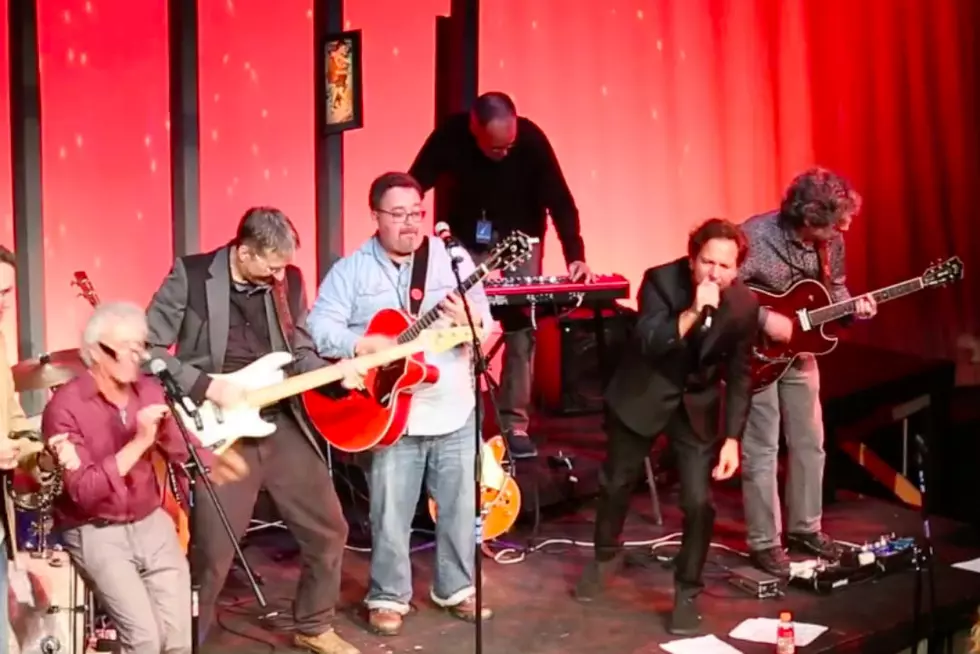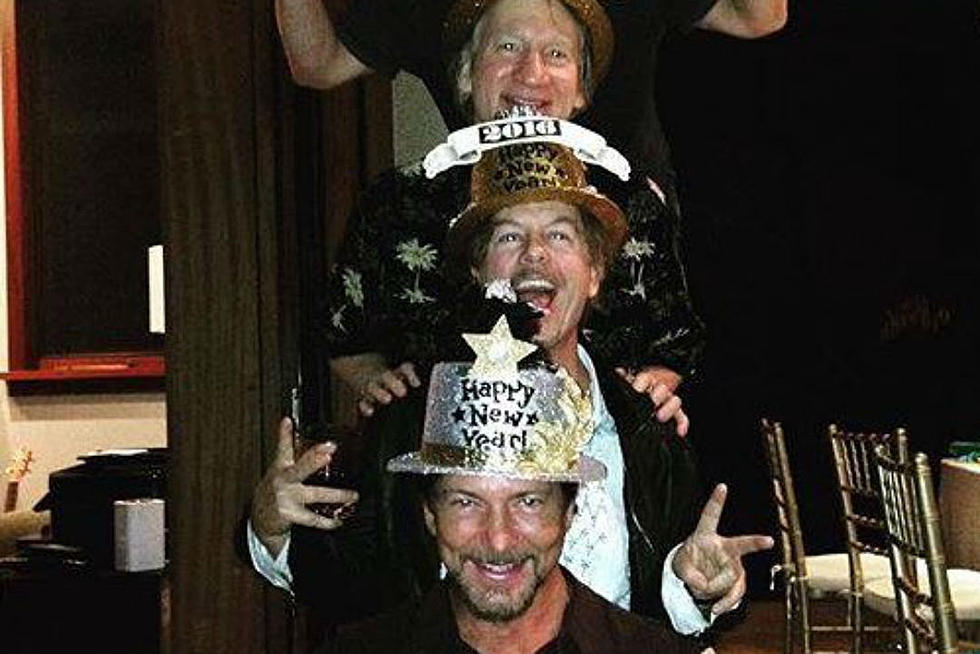
21 Years Ago: Grunge Supergroup Mad Season Release Their Only Album ‘Above’
Some of the most remarkable releases of the grunge era were those spontaneous, ultimately fleeting collaborations that were luckily recorded for posterity. Specifically, two such records are absolutely essential for any well-rounded grunge collection: Temple of the Dog’s 1991 self-titled album and Mad Season’s Above, which was released 21 years ago today (March 14, 1995).
From the start, the project was destined to be mercurial and, as was sadly common with the Seattle scene, drugs played an important part in Mad Season’s history. The supergroup was born during the production of Pearl Jam’s 1994 album, Vitalogy, when that band's lead guitarist Mike McCready went to rehab in Minneapolis. There he befriended Walkabouts bassist and fellow Seattle resident John Baker Saunders. When the pair returned to the Pacific Northwest, they enlisted Screaming Trees drummer Barrett Martin and began writing material. Finally, McCready recruited Alice in Chains frontman Layne Staley, partly because McCready hoped the trio’s influence would help the troubled singer also get sober.
McCready has said the songs which ended up on Above were written remarkably quickly. The group only gathered for a handful of rehearsals and shows before entering Seattle’s Bad Animals Studio to record their debut full-length. But working with producer Brett Eliason (who had served as Pearl Jam’s sound engineer), the band spent roughly two weeks creating one of the scene’s timeless masterpieces.
There are multiple aspects of Above that make it so damn cool. Most obviously and perhaps more than with other grunge collaborations, the album sounds like a perfect hybrid of the band members' primary groups. Above fuses Staley's tortured lyricism and droning vocals with the bluesy, overdriven guitar sound that McCready incorporated with Pearl Jam. Mad Season's first single, “River of Deceit,” opens with clean-picked guitar that sounds just like classic, "Yellow Ledbetter"-era Pearl Jam until Staley’s voice reminds you that Eddie Vedder is nowhere to be found.
Meanwhile the second single and one of the album’s heaviest and finest moments, “I Don’t Know Anything,” and the rager “Lifeless Dead,” are built around sludgy, Sabbath-style crunch riffs you’d expect from Alice in Chains or Soundgarden. While listening to Above, it's easy to get the sense that it's just four people creating for the love of music.
At the same time, the album is also a marked departure for each of Mad Season's members. Specifically on tracks like “Artificial Red” and “Wake Up," Above sounds more like a trippy, psychedelic blues jam (akin to transporting Pink Floyd and the Doors into the ’90s), rather than the precise, calculated work of '90s radio-rockers. This aesthetic is clearest on the jazzy “Long Gone Day," which features both saxophone and an guest appearance by Screaming Trees singer Mark Lanegan along with one of Staley’s most flawless, chill-inducing vocal takes ever.
Staley wrote all of the lyrics on Above, focusing on familiar topics drawn from his personal struggles and drug addiction. However, he was also reportedly influenced heavily by Kahlil Gibran's 1923 collection of philosophical essays, The Prophet. So the album captures a highly spiritual period for Staley, who clearly channeled that energy into songs like “River of Deceit.” In a 2002 interview with Yahoo Music, Barrett Martin said, “Layne felt as though he was on a spiritual mission through his music: not a rock mission, a spiritual mission.”
Although the album was well received by fans, climbed to No. 24 on the Billboard 200 and was certified gold by the RIAA, critics were initially less supportive and often slammed the record for its slow pace and free-flowing musical ideas. Entertainment Weekly gave the album a "C" grade, stating, “A sax solo and zooming guitars provide momentary relief, but most Mad Season sludge is unbearably immobile.”
Time, however, has since been more forgiving and the tragic loss of half of Mad Season's members during the ensuing years made Above something of a time capsule to the peak of the grunge era. Saunders died in 1999 and Staley died three years later, both from overdoses.
In 2013, the surviving members of Mad Season released a remastered version of the album along with the concert DVD, Live at the Moore, featuring previously unreleased live tracks and a batch of songs that were intended for a second Mad Season album that never came. R.E.M.'s Peter Buck helped with the music for "Black Book of Fear" and Lanegan wrote and recorded the lyrics and vocals for "Locomotive."
Two years later in early 2015, McCready and Martin performed together for the first time in two decades during a concert in Seattle that included Chris Cornell and other members of both Soundgarden and Pearl Jam, leading to an unexpected Temple of the Dog reunion as well.
Had Staley and Saunders survived and Mad Season remained active, it’s difficult to say whether or not they would’ve created another masterpiece like Above. Perhaps they could’ve recaptured that magic. Or maybe the frenetic, freeform inspiration of that lone record was always destined to be a rare, inimitable moment in grunge history. But Above is great enough to keep fans wondering for a lifetime.
The 27 Best Grunge Supergroups and Collaborations Ever
More From Ultimate Pearl Jam










